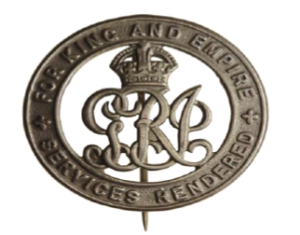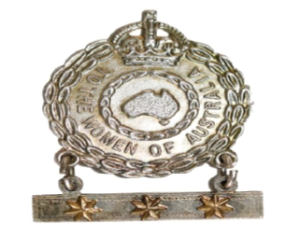OFFICIAL BADGE DESIGN
Silver War Badge
The Silver War Badge was an Imperial award issued to those who had been honourably discharged as a result of wounds or injuries received during war service. The badges are numbered and those issued to Australians carry an A prefix. If the recipient lost his badge a replacement was
not officially issued. Though there are badges marked “REPLACEMENT” in existence. Members of the RAN and Naval Reserves were entitled to the badge. Merchant seamen, medical and dental practioners who rendered full-time service on naval vessels or vessels under naval control were also eligible for the award. Unissued badges were eventually returned to the United Kingdom.

Female Relative’s Badge
The Female Relative’s Badge was introduced in 1940 for issue to the nearest female relative of a serving person. In order for the female relative to receive the badge the serving individual also had to be eligible for the award of the Returned from Active Service Badge. This provision meant that female relatives of merchant seamen could not receive the badge. The badge was issued by the Department of Defence and serially numbered. The serial number was preceded by the letters N (Navy), A (Army) or AF (Air Force). A small Federation Star for each eligible member was attached to a bar suspended from the badge.

Mother’s and Widow’s Badge
The General Service Badge was first introduced in 1940. Eligibility criteria for the badge required that the recipient had volunteered for overseas service but been retained in Australia or was waiting to deploy overseas. The badge was also temporarily issued to members of the Royal
Australian Naval Reserve who were waiting to be called up for service. Members of the Navy, Air Force and AIF who were discharged for medical reasons prior to deploying overseas could also receive this badge, provided the reason for their medical discharge was not as a result of misconduct or a pre-existing medical condition present on enlistment.





